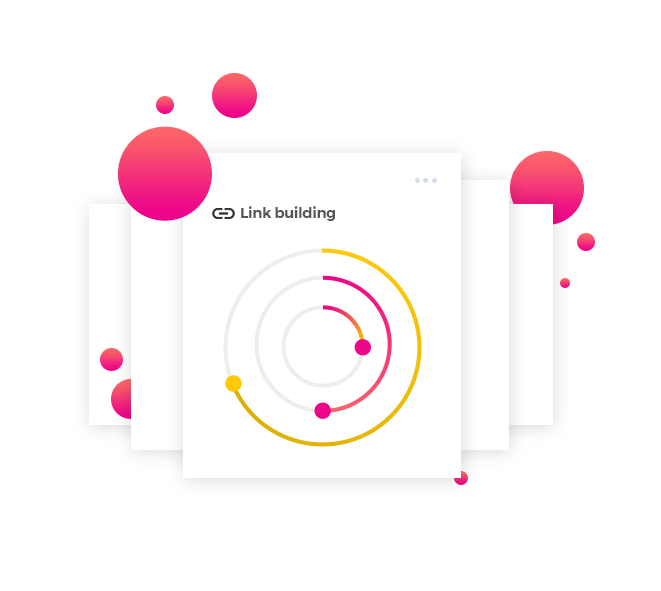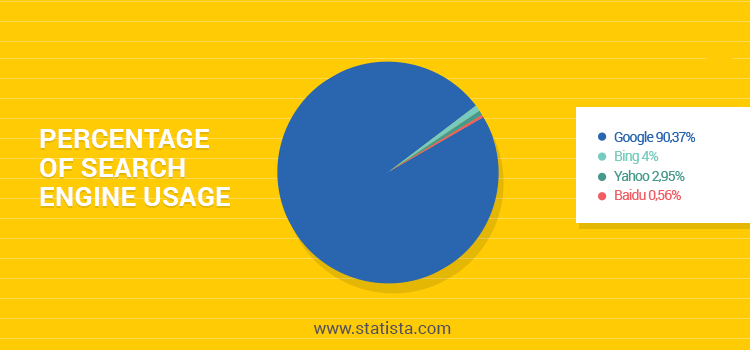Quick-fire tactics for creating a high-converting landing page
Improving the effectiveness of online marketing efforts can be achieved through various strategies in the landing page design process. The following are key components that directly influence the performance of your landing page.
Focus on a single product or service
The objective of a landing page is to provide a focused and streamlined experience for potential customers. The ultimate goal is for them to either make a purchase or request a service. Therefore, featuring more than one product or service on a landing page can lead to a low conversion rate for that particular campaign.
When creating a landing page, it's essential to choose the product or service you want to advertise and focus solely on that. For instance, if you're promoting a 4-bedroom duplex apartment for a real estate company, your landing page should only feature that apartment. If a potential customer clicks on your ad and sees the description of a 2-bedroom bungalow on the landing page, they may become confused about why it's there.
By keeping your audience focused on a specific campaign, you can generate the best results for your PPC and social media ads
Create a consistent landing page design
To create a highly effective landing page, it is important to invest time and effort in creating the design. The design should capture the audience's interest and reflect the brand image while communicating effectively.
In the realm of pay-per-click advertising, brand recognition is a crucial aspect. Even if a prospect does not convert after clicking on your ad, your brand will register in their minds. Over time, they will become more familiar with your business.
This will yield results when leads are ready to decide on the right product or service for them. Since your brand is already ingrained in their subconscious, they will recall and choose your brand over the competition.
When designing your landing page, focus on creating a simple and attractive design. Use fonts and colours that mirror your brand image, and ensure that your approach reflects your business philosophy.
Ultimately, this approach will help you create a consistent and cohesive brand image across your website. It will keep prospects engaged on your site and help them become more familiar with your brand.
Create eye-catching headlines that convert
Upon being redirected from your ad to your landing page, the first item a potential customer will peruse is your headline. To sway your audience's purchasing decision, it is imperative to craft an alluring and convincing headline. A run-of-the-mill, unremarkable headline fails to capture the interest of your visitors and hinders the likelihood of converting them into customers.
Consider the example of a real estate company advertising their 4-bedroom duplex apartment. A landing page with a title as basic as "4-Bedroom" will not captivate their audience, let alone engage them. On the other hand, a more appealing and intriguing headline such as "Modern 4 Bedroom Detached Duplex with Mini Lounge" is far more likely to pique interest. Someone who has only seen a 4-bedroom duplex apartment will be intrigued by the idea of one that comes with a "mini lounge."
By creating an eye-catching headline, you will keep your leads excited, focused, and eager to discover more about your offer, ultimately increasing the chances of conversion.
Integrate visual elements on landing pages
Visuals are an essential aspect of your landing page, serving as the emotional foundation that increases engagement and breaks up the text. They possess the ability to leave your visitors feeling content, making them a vital component of your page.
When it comes to incorporating visuals into your landing pages, it's essential to consider the type of visuals you should use.
For the sake of simplicity, it's recommended to stick to just one photo or video, as including too many visuals can make your page cluttered and overwhelming for visitors. This can cause them to forget the reason they visited in the first place.
If you're running a service-oriented business, you can consider using a photo of someone in your company uniform. A well-taken photo that captures the emotion you want your audience to feel provides an excellent opportunity for you to direct visitors' attention to important information on your page.
For instance, you can have the person in the photo pointing towards the information you want your visitors to see. Since we are hardwired to notice faces and gestures, your visitors' eyes will naturally follow the pointed direction and see the text. This technique can help your visitors stay focused on the essential details of your page.
Alternatively, you can also incorporate a video into your landing page. Videos are highly effective on landing pages because they reduce the effort visitors need to put in to understand your brand message. This can lead to a higher level of understanding from visitors.
To create an impactful landing page, it's important to include visual elements. This will keep your page engaging and interesting for your potential customers. The longer your prospects stay on your landing page, the higher the chances of converting them into customers for your business.
Create strong calls to action (CTAs)
A Call to Action (CTA) is an integral part of a landing page that plays a significant role in determining whether a visitor will convert or leave the site due to a lack of guidance. Thus, it is vital to create a compelling and efficient call to action that motivates visitors to take action and convert.
The purpose of a CTA is to guide visitors to the next step they need to take. When someone lands on your page, they may be ready to move forward, and a well-crafted CTA can help them do so. Without a clear CTA, your visitors may not know what action to take or how to take it.
CTAs play a critical role in turning visitors into paying customers. They are a key factor in encouraging visitors to take action and convert on your landing page.
So, how do you craft a killer Call-to-Action?
An effective call-to-action (CTA) is essential and should be clear and concise, avoiding generic phrases.
It is crucial to convey to the audience what they will get if they click on the CTA without wasting their time. Steer clear of typical CTAs like "Download Now" or "Request Now." Instead, consider integrating CTAs such as "Get My Free Report" or "Sign Up for Weekly Goodies." By doing so, your audience will know what they will receive in return, either a "free report" or "weekly goodies." A successful CTA will help your business obtain more qualified leads and conversions.
Optimize for mobile
Nowadays, people don't just visit websites from their desktop computers; mobile devices have become the primary means of accessing the internet. Therefore, it is crucial to ensure that your landing page is optimized to display correctly on mobile devices.
One effective way to achieve a mobile-optimized landing page is by using a responsive design. Responsive design allows your landing page to adjust to the screen size of any device that visitors use to access your page. This enhances their experience on your website.
To ensure effectiveness, it is crucial to closely monitor the loading speed of your landing page, especially on mobile devices. According to Google, mobile landing pages should load in five seconds or less. Failure to meet this benchmark may lead to a higher bounce rate, which is an undesirable outcome that you should strive to prevent.
By having a fast-loading and responsive landing page design, you can create a better user experience for mobile visitors. This, in turn, can keep users on your page longer and lead to higher conversion rates for your business.
Ensure that forms are brief, straightforward, and simple
Forms on landing pages are useful for collecting valuable information from your audience. However, improper use of these forms can intimidate visitors and deter them from filling out the required fields. Therefore, it is essential to keep your forms short, clear, and uncomplicated.
In today's fast-paced world, people are sensitive to time constraints. Providing them with a lengthy form to complete can push them towards your competitors. To prevent this, it is advisable to request only the essential information.
For generic contact forms, name, email address, and message fields are adequate. On the other hand, online order forms should only require minimal questions that are necessary to complete the order process. Additional questions can be collected through an email marketing campaign.
By keeping your forms short and straightforward, visitors will feel more comfortable sharing their information with you. This will enable you to obtain qualified leads for your business.


